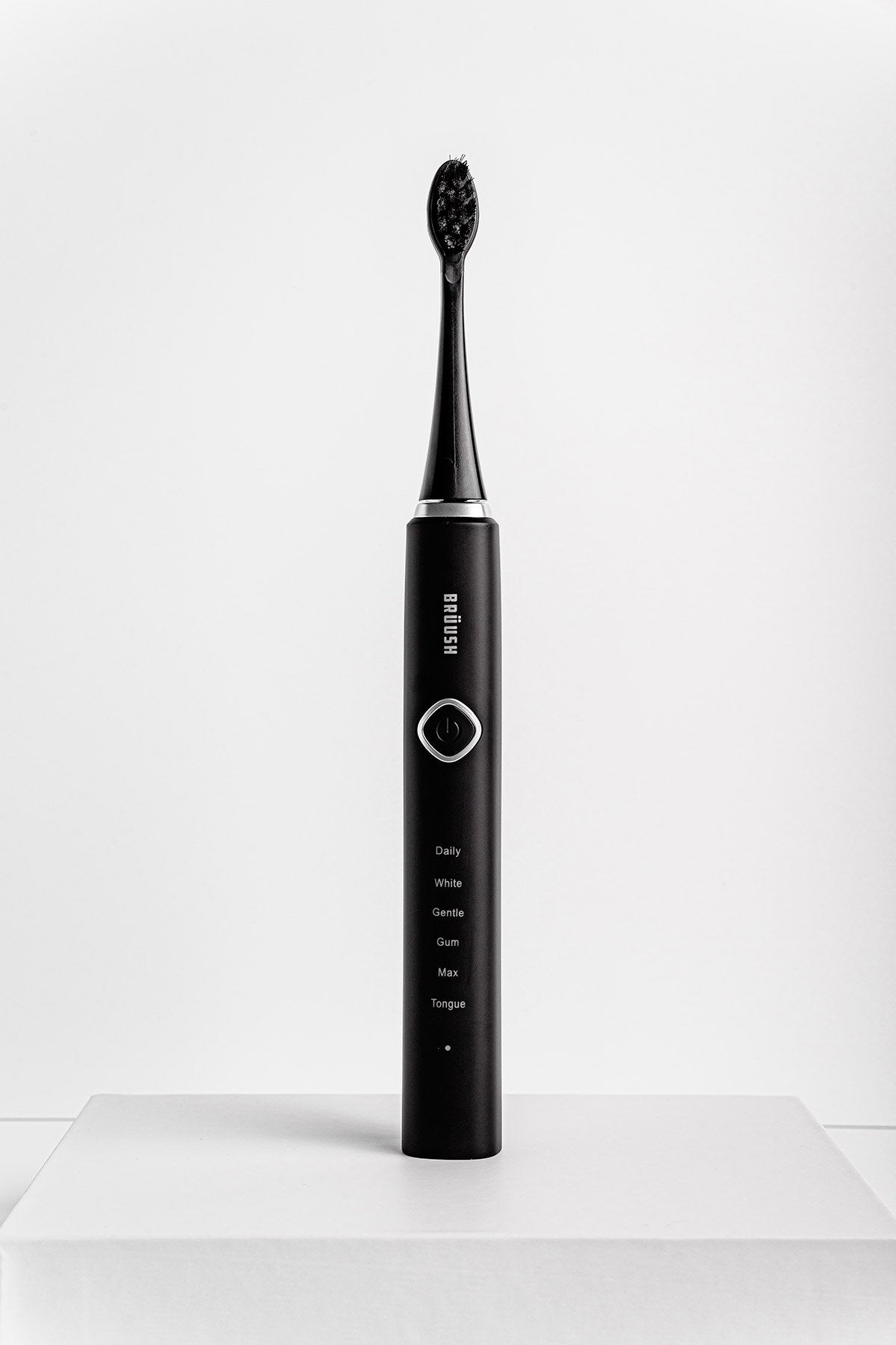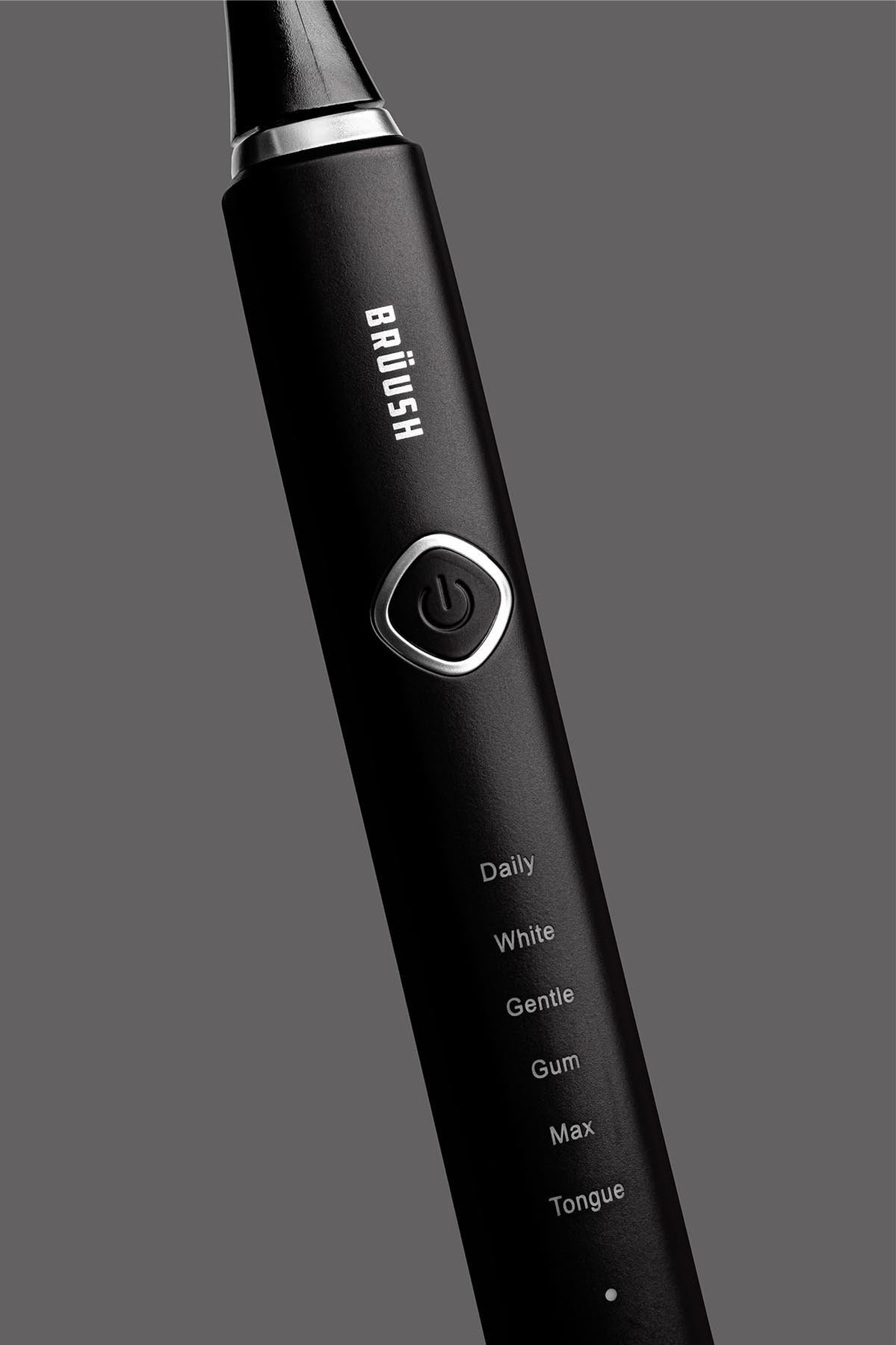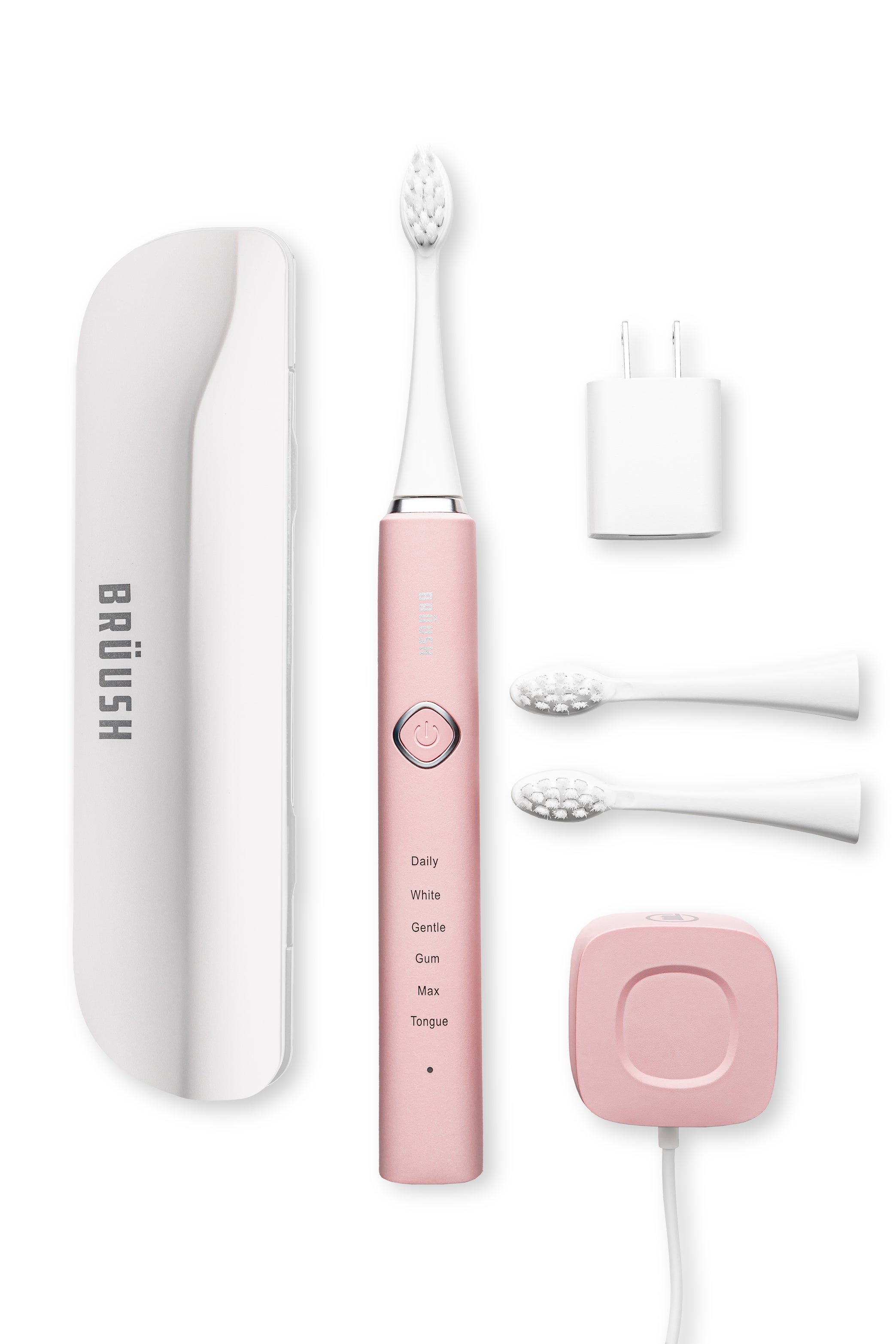Brushing your teeth is a routine. Day and night, the same thing over and over again. Due to this, many people brush their teeth on autopilot without thinking about proper technique or timing—particularly when using an electric brush that does most of the work for you.
Sounds familiar, right? Maybe you’re brushing too hard, not long enough, or are missing some key overlooked areas. Whatever your #brushingfail, there is a proper way to use an electric toothbrush (and you can feel the difference).
Here are some quick initial tooth brushing tips to kick things off:
- Make sure you’re brushing in the morning, and before bed (no excuses)
- Brush for 2 minutes with rechargeable toothbrushes, or around 3 minutes with regular manual toothbrushes
- Replace your electric brush head or manual toothbrush every 4 months
- Daily flossing is also key and should be done before you brush your teeth
- If you want to keep things extra früush, rinse with mouthwash!
Below, we’ll cover the difference between using a manual toothbrush vs an electric, along with how to use an electric toothbrush properly for best results.
Scroll on to get the good stuff.
Manual Toothbrush vs. Rechargeable Electric Toothbrush
Brushing with an electric just hits different.
In a study on the effectiveness of electric toothbrushes versus manual ones, the Journal of Clinical Periodontology found that “electric toothbrushes resulted in 22% less gum recession and 18% less tooth decay over the 11-year period.” They can also help to remove plaque and those pesky surface stains on your teeth.
So, not only do electric toothbrushes make your teeth feel and look cleaner, but they can also have a sizeable impact on your oral health overtime.
We touched on this briefly above, but depending on what toothbrush you use (manual or electric), you will need to follow a slightly different set of rules. There are pros and cons of both—which you can read all about here—but we’ll list a few key differences below.

Electric toothbrushes can:
- Give you a quicker, more effective clean. Because they move a lot faster than our human hands can, they get your teeth cleaner, faster. We recommend brushing for 2 minutes with an electric, versus 3 minutes with a manual.
- Remove more plaque than your average toothbrush. 21% more plaque, to be exact. There’s a study to prove it! If you’re using a manual, you may need to put in a bit more work and effort to ensure your teeth are clean from plaque. Don’t overbrush, though!
Manual toothbrushes can:
- Be more gentle on your gums. When using a manual, you’re in control of the brush speed, motion and pressure. You’ll need to adjust your pressure when switching to an electric and let the brush do it’s thing.
- Lead to over brushing. We mentioned that you need to brush for longer with a manual, but because electric toothbrushes often have built in timers, they ensure you don’t overbrush. When using a manual brush, make sure to set a timer!
If you’re searching for a new electric toothbrush that not only does your teeth a solid, but also looks pretty dang sleek too, check out Brüush! It comes with 3 brush heads, a compact travel case, a USB power adapter and a charger. It was also built with dentists to ensure you get the best clean.
How to Brush Your Teeth with a Electric Toothbrush
Alright, now it’s time to get to the good stuff.
How exactly does an electric toothbrush work? A power/rechargeable/electric toothbrush works by using an oscillating or rotating technology in the brush head to provide a more effective clean.
Because electric toothbrushes have some power behind them, they end up doing a lot of the work or you (YAY!). But what this means is that your brushing technique will vary slightly from using a manual.
Here’s how to brush your teeth with an electric toothbrush:
Set Your Cleaning Mode
The first thing you’ll want to do when brushing your teeth with a power toothbrush is set your cleaning mode. Depending on the brush model and brand that you’re using, these modes will vary.

On the most basic end, you may only have one setting. If you’re using a Brüush electric toothbrush, though, you’ll have a 6 different modes to choose from:
- Daily: This one is self explanatory. Daily mode has 31,000 brush strokes per minute and is perfect for everyday use.
- White: Looking for a deeper clean? White mode utilizes stronger vibrations, which helps to remove tough-to-remove surface stains.
- Gentle: For all of you sensitive teeth and gums folks—gentle mode has you covered. It uses more subtle sonic pulses while still delivering on solid clean.
- Gum: Focusing on gum health, this mode’s vibration pattern gently massage around the gum line to promote blood circulation.
- Max: Need the deepest of deep clean for those hard-to-reach places? Max mode digs deep, lasting for 3 minutes (1 minute longer than the other modes), using a unique pattern of sonic vibrations.
- Tongue: Last but not least, tongue mode helps to fight bad breath by massaging your tongues surface. Just make sure to flip the toothbrush around to use the back of the head for this one!
Built-in 2-Minute Timer
You can pick up a toothbrush and use it twice a day, everyday. But, if you’re not brushing for the adequate amount of time, then your oral hygiene is bound to fall flat. The same goes for flossing!
As mentioned earlier, when using electric toothbrushes you’ll need to brush for a total of 2 minutes. Every Brüush toothbrush has a 2 minute built-in-timer with a quadpacer that pauses every 30 seconds to let you know when it’s time to switch from one quadrant to another. Once you’ve hit 2 minutes, it shuts off to prevent you from over brushing.
That being said, for an extra früush clean, max mode lasts for a full 3 minutes to really polish your teeth. You likely won’t need to use this mode everyday, but it’s nice to incorporate into your routine every once in a while to really buff the tooth surface.
How to Position Your Electric Toothbrush for Optimal Brushing
So, you know about the modes. You know about how long to brush for. Now, it’s actually time to get brushing.
Because your electric brush is doing the scrubbing for you, when it comes to your brushing technique, all you have to do is:
Step 1: Wet your toothbrush head and squeeze on a pea-sized amount of toothpaste (ideally fluoride toothpaste).
Step 2: Position the brush head on a 45-degree angle just touching your gum line.
Step 3: Turn on the brush, and move it across your teeth with light pressure—from side to side, not up and down.
Step 4: Brush for 2 minutes, switching from one quadrant to the next every 30 seconds. Don't forget to brush the insides, outsides, and chewing surfaces of the teeth.
One of the biggest mistakes people make is applying the same pressure they would use with a manual—but there’s no need. The bristles can actually move around much better without a ton of added force.
HOT TIP: Put the brush head on your teeth first before turning the brush on. This helps to reduce any toothpaste splatter.
Don't Forget to Charge!
Picture this: You’ve been brushing your teeth for a few weeks now, and things are going smoothly. You’re feeling pretty great about it. Your teeth feel cleaner, look whiter, and you couldn’t be happier. Then, you go to pick up your brush one morning and press the on button, only to find that it’s out of batteries.
“Oh right, I’ve gotta charge this thing.”
Well, if you’re using a Brüush, then you can rest assured that our industry leading 4-week battery life means you only have to give your power toothbrush a good charge once a month. You may also notice charge level indicator lights on your brush, which indicate when it's fully charged, or running low.
Use your Travel Case When on the Move
Lastly, the best way to travel with any toothbrush is with a case. Throwing it into a toiletry bag with loads of other things floating around is NOT going to keep your brush clean.
Not all electric toothbrushes come with a charging case, so you may need to buy one online (or use a plastic bag in desperate measures). If you’re using a Brüush, you’ll know that every toothbrush comes with a sleek travel case so you can keep your Brüush safe and sound, wherever you go.






